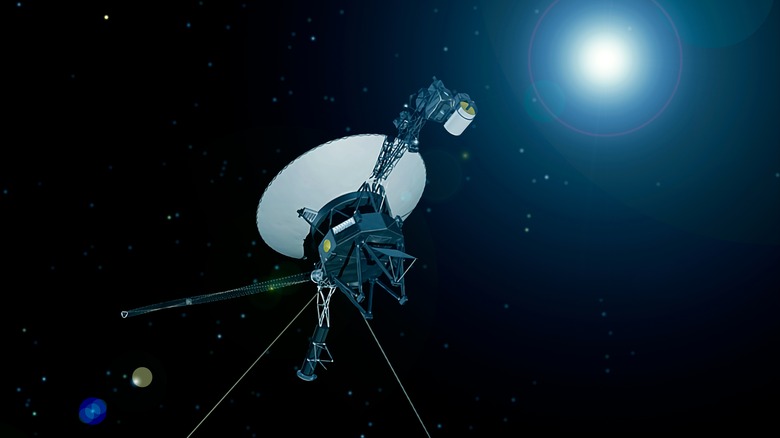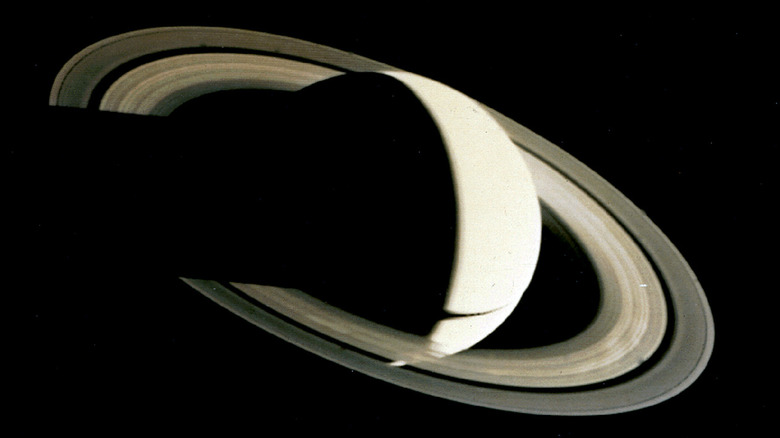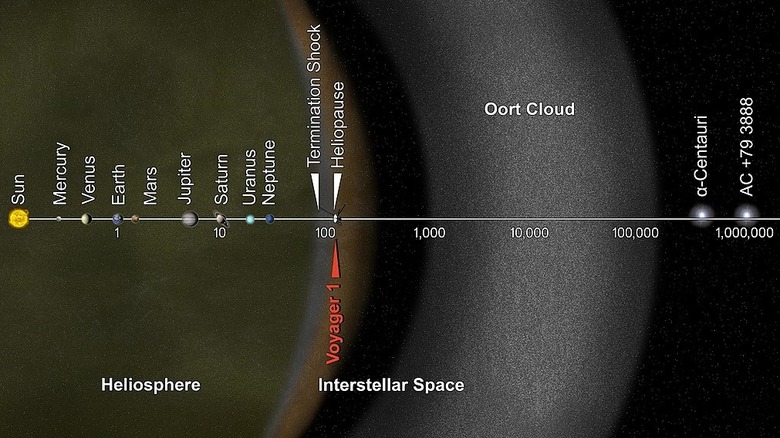What Happened To NASA's Voyager 1 Probe?
Voyager 1 is one of humanity's greatest achievements in space travel. This spacecraft was launched by NASA in September 1977 on a one-way trip to the outer reaches of our solar system. Originally, it was built to just fly past Jupiter and Saturn, but Voyager 1 went on to exceed all expectations, becoming the first human-made object to enter interstellar space and even making fascinating discoveries at the very edge of the solar system.
Its early mission unleashed a cascade of discoveries: new moons, intricate ring structures, startling insights into magnetic fields, and plasma storms. Over time, Voyager 1's purpose evolved. From a planetary scout, it became an interstellar pioneer. Today, it continues to drift far beyond the sun's influence — a region known as the heliosphere — and it continues to transmit from interstellar space. Let's trace the remarkable journey of Voyager 1 from its design and launch, through its historic flybys, to the moment it crossed the threshold of our solar system. Finally, let's discover where Voyager 1 is today, what its current mission is, and how long we expect it to send us messages from interstellar space.
Unlocking the secrets of the outer planets
On September 5, 1977, NASA launched Voyager 1 from Cape Canaveral, Florida. The Jet Propulsion Laboratory designed this spacecraft to serve as both a planetary explorer and an interstellar messenger. Its creation was part of the Voyager program, conceived to take advantage of a rare planetary alignment that would allow a single spacecraft to "slingshot" from one giant planet to the next using gravity assists. While Voyager 1's technical specifications were modest by today's standards, its mission was anything but, going on a journey to expand our understanding of the outer solar system (albeit, not the solar system's missing ninth planet).
Voyager 1's first encounters transformed planetary science. Arriving at Jupiter in 1979, Voyager 1 revealed a dynamic world of storms, lightning, and a previously unknown ring system. It uncovered the active volcanoes of Io and delivered striking images of Europa's fractured, icy shell, hinting at oceans hidden beneath. These discoveries reshaped theories about our planetary system and where life might exist.
In 1980, Voyager 1 gave humanity the closest view of Saturn's intricate rings. It also provided intimate portraits of Titan, Saturn's largest moon, cloaked in a thick atmosphere that concealed its surface. This close flyby set Voyager 1 on a trajectory that would carry it away from the planets, effectively ending its tour of the outer worlds, but opening the door for a new chapter.
Before it ever touched the boundary of the heliosphere, Voyager 1 had already altered the way we see our cosmic neighborhood. Yet this spacecraft carried more than just instruments and cameras. It also bore the Golden Record, a message in a bottle from Earth. The record is inscribed with sounds, images, and greetings from our world. Long after Voyager's discoveries are archived, that record continues its silent journey, a symbolic gesture that humanity not only explores, but also seeks to be known.
Voyager in the unknown
In February 1990, Voyager 1 completed one of its final imaging tasks within the solar system. It took an image called the Solar System Family Portrait from over 6 billion kilometers away from the sun. This composite shows six planets as faint points of light, including Earth, which was captured as a "pale blue dot." This image marked the end of Voyager 1's planetary mission and the beginning of its transition into interstellar exploration. To conserve power, NASA shut down Voyager's cameras shortly afterwards, focusing its remaining resources on measuring the outer boundaries of the sun's influence.
Over the following decades, Voyager 1 continued to collect valuable data on charged particles, magnetic fields, and plasma waves in the outer heliosphere. In August 2012, it became the first human-made object to cross the heliopause and enter interstellar space, leaving the region dominated by the solar wind and sampling the plasma environment of the interstellar medium directly. The data provided critical insight into how the sun interacts with the surrounding galaxy and how cosmic radiation behaves beyond the heliosphere.
Today, Voyager 1 is over 15 billion miles from Earth, and it's still transmitting data via NASA's Deep Space Network. However, its power source, a plutonium-based radioisotope thermoelectric generator, continues to weaken. Mission engineers estimate that by the mid-2030s, Voyager will reach its end of life as it will no longer have sufficient energy to operate its instruments or maintain communication with Earth.
When contact is finally lost, Voyager 1 will remain on its trajectory through the Milky Way, never to leave our galaxy, as it lacks the velocity to escape its gravitational pull. It will become no more than a durable artifact of human technology and curiosity, a reminder that exploration is both a scientific endeavor and an enduring expression of humanity's reach into the unknown.


